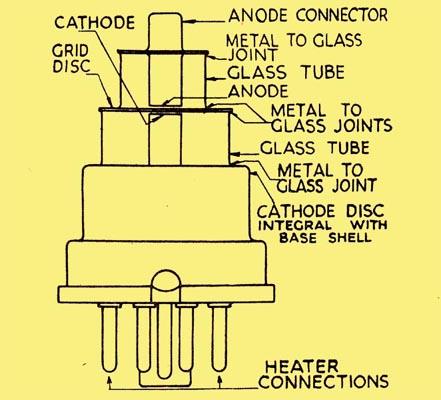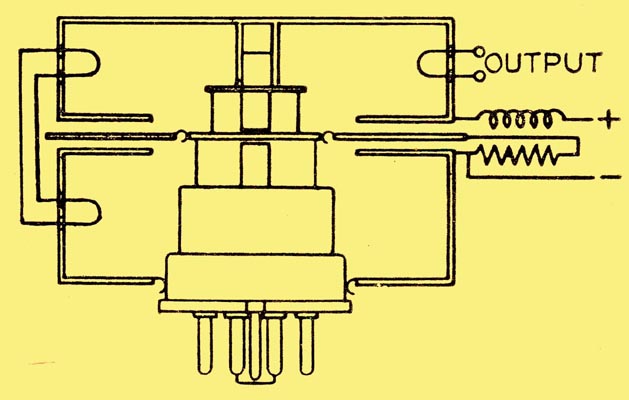|

The octal based planar triodes were popularly known in America as Lighthouse Tubes because of their shape. The form of construction can be seen above.
This layered form of construction with precise spacings, although very costly, has permitted the effective range of the ordinary negative grid valve to be extended well into the micro-range region. The amateur 2,300 Mc/s. band is just about within their reach. By contrast the valves that followed such as the DET29 could operate at close to 5 GHz.
It will be seen that the effective cathode and anode areas are very small, the former demanding a very high emission in terms of milliamperes per square centimetre, and the latter restricting the dissipation considerably.
The valves were intended to be used with cavity resonators as tuning elements, and to achieve the highest possible frequencies the valves themselves must become apart of the resonator system.

The image above shows a grounded grid version of the tuned anode-tuned grid oscillator built with cavity resonators.
The shielding action of the grounded grid so isolates the anode and cathode circuits that, for oscillation, external feed-back has to be provided by means of inter-connected loops.

A sectional view of typical lighthouse valve construction.
We have several lighthouse valve exhibits in the museum: 2C42, 2C46, CV2932 and GL446A.
|